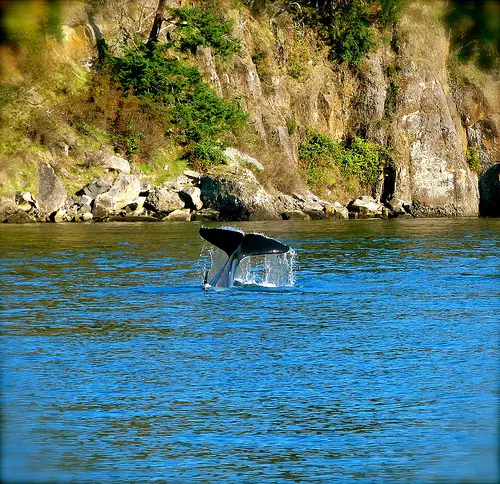Amazing Wildlife Expeditions That You Shouldn’t Miss
Wildlife is all the non-domesticated plants, animals and other organisms, and is found in all kinds of ecosystems among which are deserts, rainforests, plains and other areas like the urban towns. The pressure of growing human populations around the world has led to the increasing need to use land initially intended for Wildlife, for human habitations and agriculture, which has led to reduced habitats for wildlife. This has led to the need for Wildlife conservation.
Wildlife conservation which has now become key when talking about Wildlife is a practice whereby people attempt to protect endangered plants and animals together with their habitats. This is aimed at ensuring that these natural ecosystems with their habitants are here even for future generations.
Expeditions are means of carrying out pertinent research on all constituents of Wildlife, aimed at informing the stakeholders about the status quo, the present threats and challenges to Wildlife’s future, with an aim to finding ways of safeguarding the same for the future generations good.
Threats to Wildlife
The major threats to wildlife can be put as shown in below categories:
Habitat Loss: every year the number of wildlife habitat areas reduce due to various factors mostly man-made but also some which are natural including pollution, destruction of forests and rivers, climatic changes etc. The habitat areas that remain have been interfered with to an extent that they don’t resemble at all what there was originally.
Climate Change: this can cause very serious damage to specific habitats due to temperature changes and a slight change in average rainfall will result into major changes in the season and climatic conditions and disruption of the habitat of hibernating creatures. This will also affect plants and wildlife which are very sensitive to moisture changes.
Pesticides & Toxic Chemicals: Pesticides used by people to aid in diminishing certain pests and insects that infest their livestock or plants, are environmentally toxic and harmful to other plants, animals, insects, and rodents.
Hunting and Poaching: without proper regulations this causes a major threat to wildlife. Mismanagement of forest departments, greed and corruption in country systems and institutions also triggers this problem.
Natural Phenomenon: Floods, earthquakes, volcanoes, lightning, forest fires etc also cause damage or are a threat to wildlife.
Wildlife Expeditions
Types of Wildlife Expeditions include; Earth-watch Expeditions, Conservation Expeditions, Mountaineering Expeditions, Wildlife Research Expeditions and Nature Expeditions.
Some Wildlife Expeditions include (information borrowed from Earthwatch.org):
1. Alaska’s magnificent wildlife

Nestled between rugged glaciers and snowcapped mountains, the Chilkoot Valley is well known to contain for years brown bears, eagles, mountain goats, salmon and numerous birds. Among the seasonal wildlife at Alaska Chilkoot Valley include the whales, surf scooters, loons, seals, harlequin ducks etc.
Alaskan wildlife also boasts of the shores of a picturesque lake, magnificent hemlock and spruce trees. Brown bears can be viewed during twilight departures and during sunset, bear families may descend to the river.
2. Conserving South Africa’s Mammals – the Expedition

Leopards, baboons, and other mammals are continuously under growing threat, and scientists are actively discovering how to preserve South African biodiversity. This expedition will help researchers assess the role of the Soutpansberg Mountains in biodiversity conservation. Data is being collected by use of cameras, GPS among other means and the data is to be utilized in the determination of the extent of livestock depredation.

This is important since it matters to the community as the livestock is usually eaten by leopards, hyenas among other predators. This data will also help in knowing the rate of crop destruction by primate species, this also causes human-wildlife conflict in this region.
3. Whales and Otters of British Colombia

This expedition is aimed at helping to protect and track the Pacific grey whales and feeding them in their summer feeding grounds, while also monitoring the North American river otters that also share in the waters of the Pacific.
This will hopefully help researchers design better ways to protect these animals and determine if they are being affected by climate changes. The researchers and people who join in the expedition spend up to half of their time monitoring local river otter populations to see how they are faring in these shared waters. Since the otters and the whales share this habitat, the otters are great co-indicators for the threats facing the whales and the overall region.
4. Animals of the Outback in Australia

This expeditions are aimed at helping to protect this hidden outback regions native animals. The Charles Darwin Reserve is an outback oasis about three fifty five kilometers north east of Perth and has plenty of rare and endangered species in it’s beautifully diverse landscapes. Here various endangered species of frogs, dunnarts, geckos, spiders, plants, moths, skinks are found inhabiting.
5. Carnivores of Madagascar

This expedition is aimed at monitoring Madagascar’s mysterious predator, the fosa, and protects its fragile island habitat. Throughout the expedition, the expeditors undertake a variety of tasks among which are setting fosa traps and using radio-tracking transmitters and receivers, they are also trained in checking traps regularly especially in the mornings for trapped or sedated animals. “The battle to save species like the fosa — which has less than 7% of its original habitat remaining has to be fought where they live.
6. Cheetah Conservation in Namibia

This expedition is aimed at helping the world’s fastest mammal, the cheetah which is facing extinction in Namibia’s. The Expeditors help by taking part in on going research, conservation among many other available duties like wildlife surveys and cheetah husbandry.
Many countries have made wildlife conservation a government initiative that is driven by specific government agencies supported by Wildlife enthusiasts and non governmental organizations, who are all dedicated to wildlife conservation. These agencies and organizations help in implementing policies designed to protect wildlife and also promote wildlife conservation causes.
![]()






